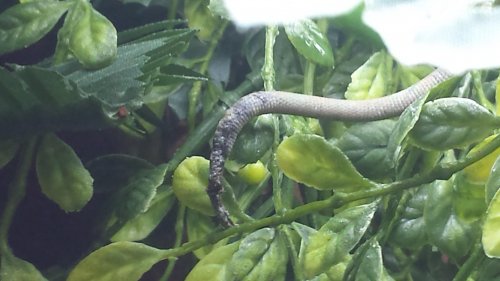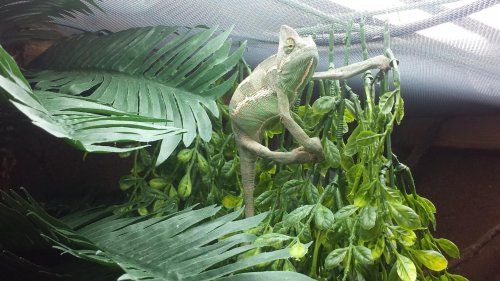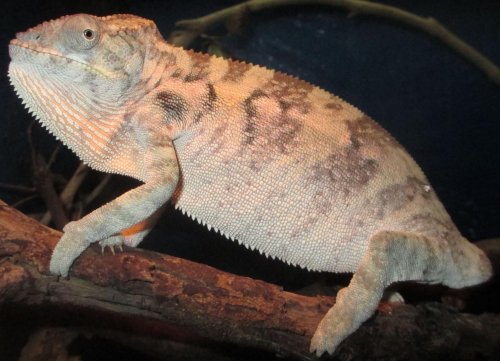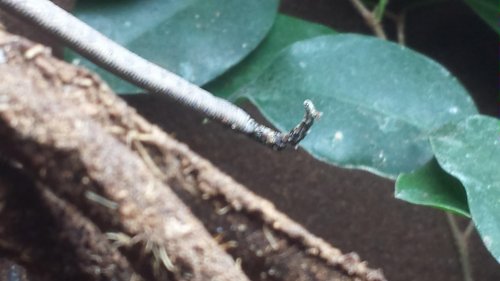bockreptiles
New Member
Just noticed the tip of one of my veiled chams is necrotic. Question is why did this happen, and is surgery needed?
Chameleon Info:
Your Chameleon - Veiled Female 7mo
Handling - rarely
Feeding - large 8 a day gut loaded crickets---none left in cage---
Supplements - daily calcium, weekly calcium+D3 weekly muti vitamin
Watering - Misting automatic 3 times a day for 2 min--mistking
Fecal Description - normal
History -have other chameleons on the same diet and habitat setup. i have never had this issue in the past.
Cage Info:
Cage Type - screen 24x36x48-- 2 females share with dense natural dividers
Lighting - 4x 51W T5 reptisun 5.0 bulbs
Temperature - day time 80-100 night 70-80
Humidity - live plants 30%
Plants - Yes ficus
Placement - secluded place, climate controlled
Location - Arizona
Thanks!
Chameleon Info:
Your Chameleon - Veiled Female 7mo
Handling - rarely
Feeding - large 8 a day gut loaded crickets---none left in cage---
Supplements - daily calcium, weekly calcium+D3 weekly muti vitamin
Watering - Misting automatic 3 times a day for 2 min--mistking
Fecal Description - normal
History -have other chameleons on the same diet and habitat setup. i have never had this issue in the past.
Cage Info:
Cage Type - screen 24x36x48-- 2 females share with dense natural dividers
Lighting - 4x 51W T5 reptisun 5.0 bulbs
Temperature - day time 80-100 night 70-80
Humidity - live plants 30%
Plants - Yes ficus
Placement - secluded place, climate controlled
Location - Arizona
Thanks!











